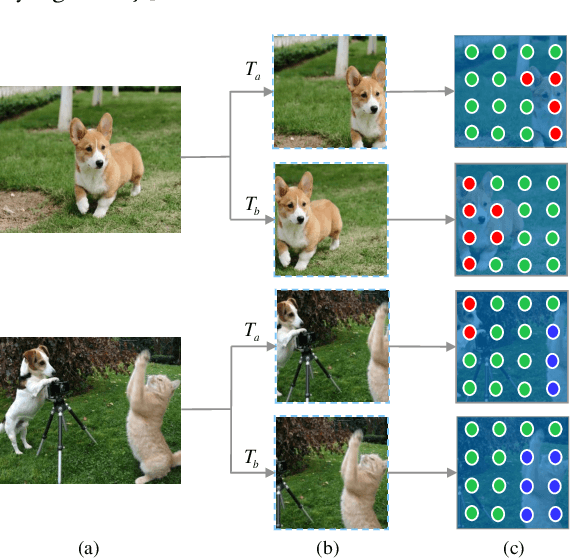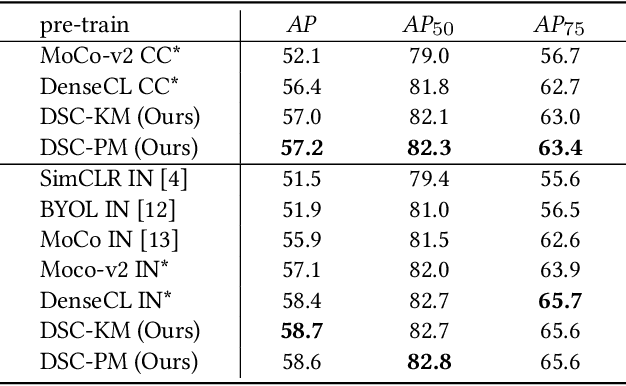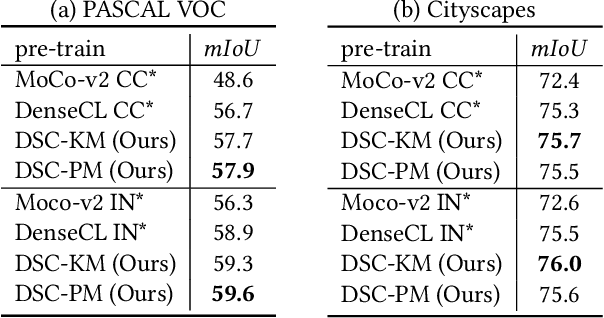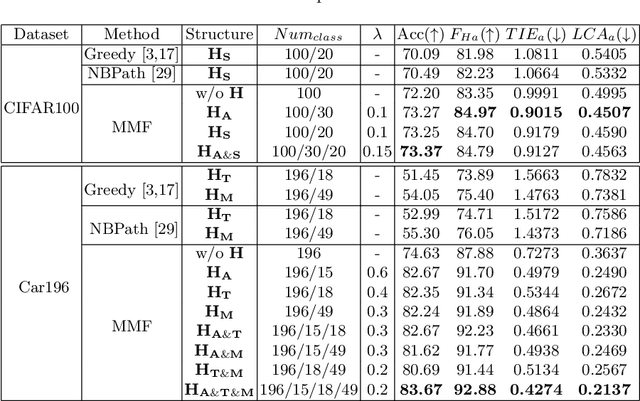Xiaoni Li
Dense Semantic Contrast for Self-Supervised Visual Representation Learning
Sep 16, 2021



Abstract:Self-supervised representation learning for visual pre-training has achieved remarkable success with sample (instance or pixel) discrimination and semantics discovery of instance, whereas there still exists a non-negligible gap between pre-trained model and downstream dense prediction tasks. Concretely, these downstream tasks require more accurate representation, in other words, the pixels from the same object must belong to a shared semantic category, which is lacking in the previous methods. In this work, we present Dense Semantic Contrast (DSC) for modeling semantic category decision boundaries at a dense level to meet the requirement of these tasks. Furthermore, we propose a dense cross-image semantic contrastive learning framework for multi-granularity representation learning. Specially, we explicitly explore the semantic structure of the dataset by mining relations among pixels from different perspectives. For intra-image relation modeling, we discover pixel neighbors from multiple views. And for inter-image relations, we enforce pixel representation from the same semantic class to be more similar than the representation from different classes in one mini-batch. Experimental results show that our DSC model outperforms state-of-the-art methods when transferring to downstream dense prediction tasks, including object detection, semantic segmentation, and instance segmentation. Code will be made available.
MMF: Multi-Task Multi-Structure Fusion for Hierarchical Image Classification
Jul 02, 2021



Abstract:Hierarchical classification is significant for complex tasks by providing multi-granular predictions and encouraging better mistakes. As the label structure decides its performance, many existing approaches attempt to construct an excellent label structure for promoting the classification results. In this paper, we consider that different label structures provide a variety of prior knowledge for category recognition, thus fusing them is helpful to achieve better hierarchical classification results. Furthermore, we propose a multi-task multi-structure fusion model to integrate different label structures. It contains two kinds of branches: one is the traditional classification branch to classify the common subclasses, the other is responsible for identifying the heterogeneous superclasses defined by different label structures. Besides the effect of multiple label structures, we also explore the architecture of the deep model for better hierachical classification and adjust the hierarchical evaluation metrics for multiple label structures. Experimental results on CIFAR100 and Car196 show that our method obtains significantly better results than using a flat classifier or a hierarchical classifier with any single label structure.
 Add to Chrome
Add to Chrome Add to Firefox
Add to Firefox Add to Edge
Add to Edge